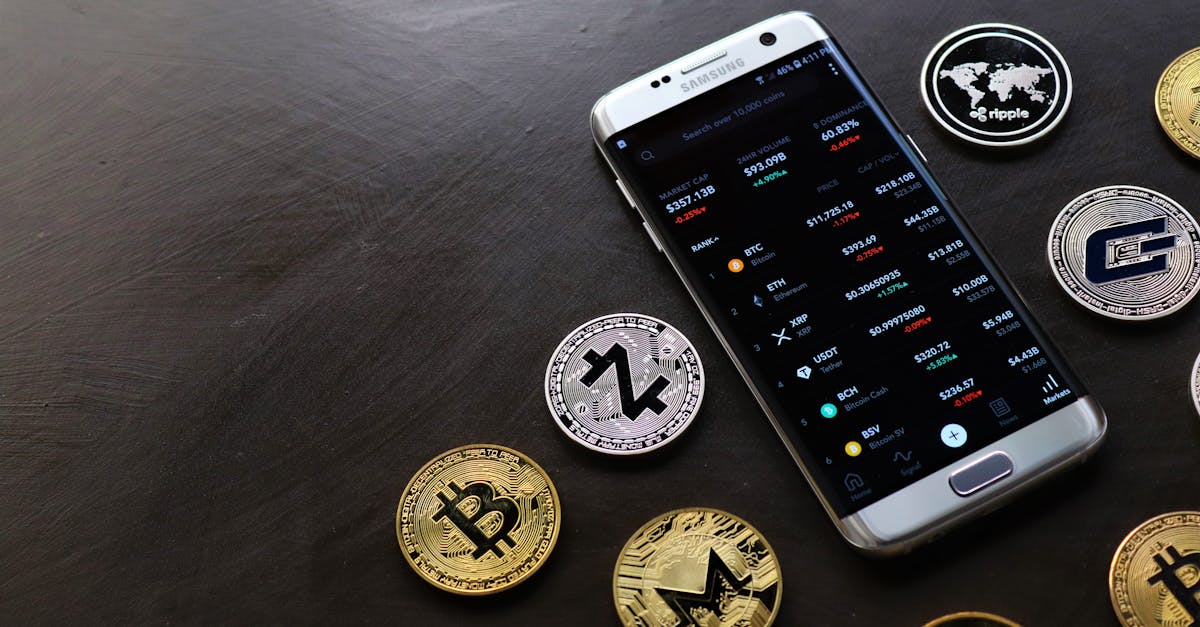Transforming Finance Digital Wallet Tales
Introduction to Digital Wallets
In recent years, digital wallets have drastically transformed the way individuals and businesses conduct financial transactions. These convenient, portable digital payment systems have become integral to our daily lives, whether we're paying for a coffee or sending money across continents. With a simple tap on a smartphone, consumers can complete transactions securely and swiftly. The rise of digital wallets has not only revolutionized consumer experience but also posed challenges and opportunities for financial institutions. As more users embrace cashless transactions, the financial landscape undergoes significant changes. But what exactly drives this digital financial shift, and what does the future hold for digital wallets?
Advertisement
The Evolution of Digital Wallets
Digital wallets didn't appear overnight; they are the product of a gradual evolution in technology and consumer preferences. Initially, only a few visionaries foresaw a future where wallets could exist outside our pockets and lives. Over the past two decades, technological advancements like smartphones, cloud services, and contactless payment infrastructure laid the groundwork for digital wallet development. Platforms like PayPal and Google Wallet pioneered this evolution, offering secure online payment options and proving that the future of transactions lay in comprehensible and user-friendly digital solutions. As more players, such as Apple Pay and Samsung Pay, entered the scene, digital wallets took center stage, evolving from mere transaction tools to comprehensive financial management platforms.
Advertisement
How Digital Wallets Work
Understanding the mechanics behind digital wallets helps demystify their growing popularity. Essentially, digital wallets store users' payment information securely, often using advanced encryption techniques to protect sensitive data. They enable users to make remote payments via various devices, such as smartphones, smartwatches, or even laptops, without needing to access physical cards. Near Field Communication (NFC) and tokenization are two pivotal technologies powering many digital wallets, allowing seamless, secure contactless payments. Users can link these wallets directly to their bank accounts, making it simple to fund purchases, pay bills, and even track expenses with real-time data.
Advertisement
Security Concerns and Solutions
As with any digital innovation, concerns over security and privacy are paramount when exploring digital wallet technology. Users often question the safety of storing financial information in digital wallets, but developers have engineered multifaceted security measures to thwart potential threats. Encryption, tokenization, and two-factor authentication (2FA) stand as bulwarks against cyber threats, ensuring user information remains protected. Biometric authentication—such as fingerprint scanning and facial recognition—further enhances wallet security, offering users both convenience and peace of mind. Despite these measures, potential users must stay informed about cybersecurity best practices to minimize risks associated with digital wallet use.
Advertisement
Benefits of Digital Wallets
The advantages of digital wallets extend beyond mere convenience. For consumers, these tools represent a new era of financial management, enabling easy budgeting, expense tracking, and even access to special offers and reward programs. On the merchant side, digital wallets simplify transaction processes and reduce overhead costs associated with handling cash. Improved efficiency in payment processing enhances customer satisfaction, encouraging brand loyalty and repeat business. Furthermore, digital wallets offer an eco-friendly alternative to traditional means, reducing the reliance on physical materials like paper and plastic that burden our environment.
Advertisement
The Role of Financial Institutions
In the wake of the digital wallet surge, financial institutions are also reevaluating their services and business models. Traditional banking systems are evolving, incorporating digital wallet technologies to stay competitive in an intensely dynamic market. Banks and credit unions are increasingly collaborating with tech companies to offer co-branded digital wallet solutions equipped with exclusive features. These collaborations allow financial institutions to retain their customer base while attracting tech-savvy clients seeking innovative financial solutions. The emergence of neobanks, entirely digital banking platforms, further challenges traditional banking structures, pushing them to adapt and innovate continuously.
Advertisement
Impact on Consumer Behavior
Digital wallets have undoubtedly influenced consumer behavior, reshaping how people approach shopping and financial management. With access to a wide array of services at their fingertips, consumers are more informed, selective, and empowered in making purchasing decisions. The instant gratification offered by digital payments drives increased transaction frequency, benefiting merchants with higher sales volumes. Meanwhile, younger generations, particularly millennials and Gen Z, gravitate toward these technologies, valuing their speed, convenience, and tech-forward approach to finance. This shift in consumer behavior highlights a broader trend toward digital integration across various facets of life.
Advertisement
Future Prospects
The journey of digital wallets is far from over, with future developments on the horizon that promise to further revolutionize the financial landscape. Artificial Intelligence (AI) and machine learning have the potential to make digital wallets smarter, offering users personalized financial insights and advice based on spending habits. As cryptocurrencies gain mainstream acceptance, digital wallets are likely to adapt, offering integrated solutions for decentralized currencies. Moreover, the expansion of the Internet of Things (IoT) could integrate digital wallets seamlessly into everyday objects beyond smartphones, such as smart cars or even home appliances, leading to ubiquitous, seamless payment experiences.
Advertisement
Barriers to Adoption
While digital wallets offer numerous benefits, several barriers hinder widespread adoption. Technological limitations in regions with weak digital infrastructures can limit access, while cultural reservations about security and data privacy persist worldwide. Regulatory hurdles also present challenges, as regions vary in their approach to digital payment frameworks, potentially stalling innovation. To address these issues, stakeholders—including technology developers, financial institutions, and regulators—must collaborate to establish international standards ensuring security, interoperability, and consumer confidence in digital wallet technology. Together, these efforts can pave the way for a global digital finance evolution.
Advertisement
Conclusion
Digital wallets are undeniably reshaping finance, bridging technology with everyday transactions and responses. Offering unmatched convenience and efficiency, they redefine both consumer habits and financial services mechanisms. As digital wallets continue to gain traction globally, the ecosystem supporting them must address key challenges while fostering innovation. With collaboration across sectors, digital wallets can thrive further, delivering robust solutions complementing our increasingly digital world. Ultimately, digital wallets are more than a technological fad—they represent a strategic step toward the future of finance, promising an exciting realm of possibilities for users, businesses, and institutions alike.
Advertisement








